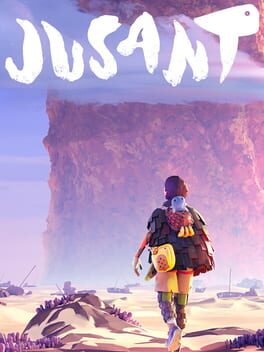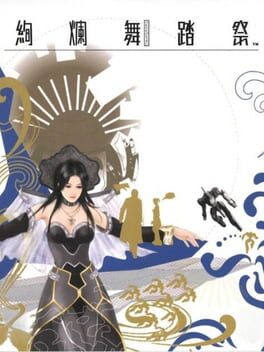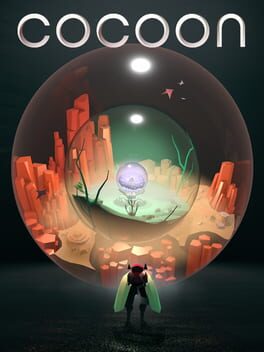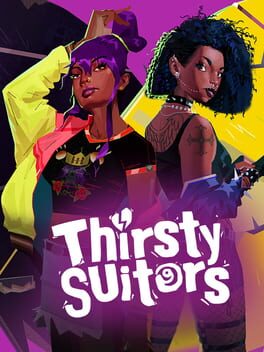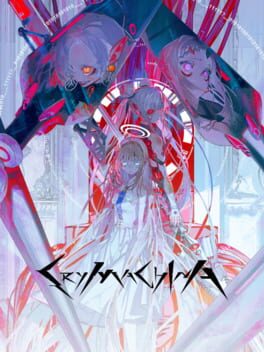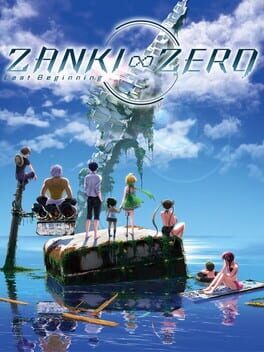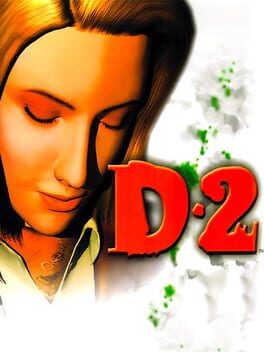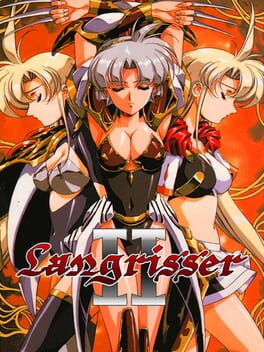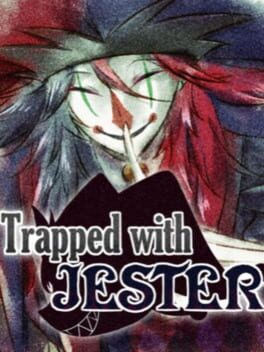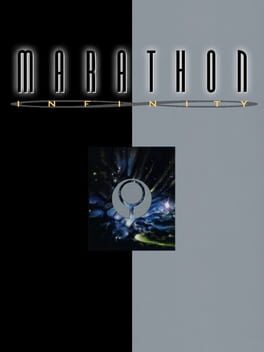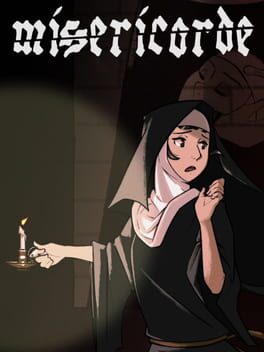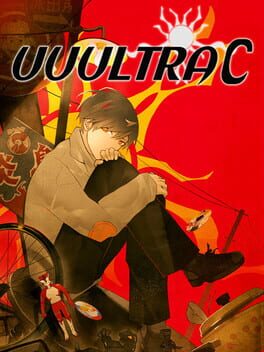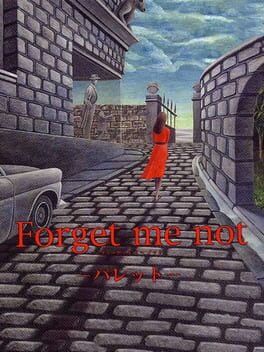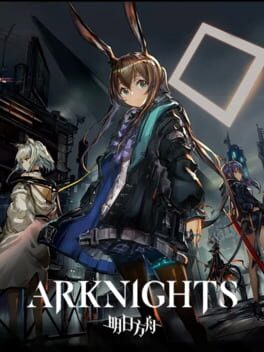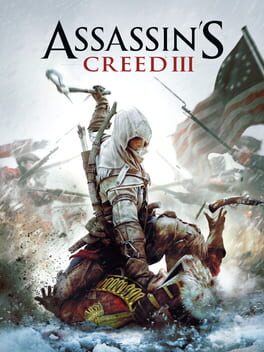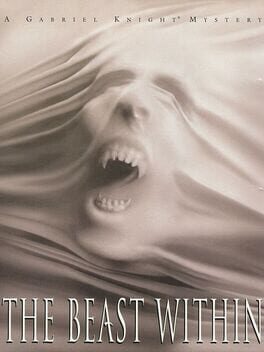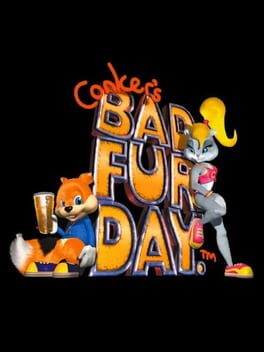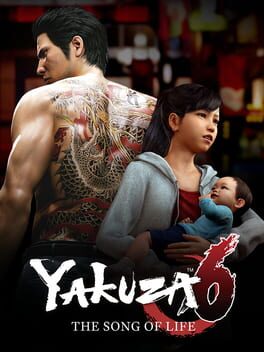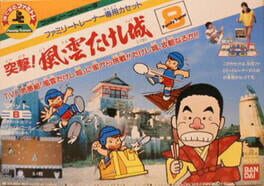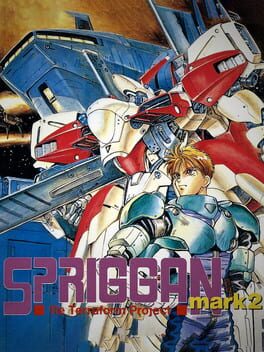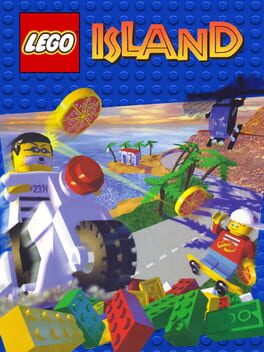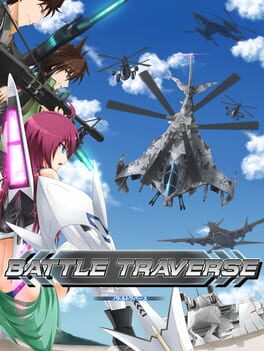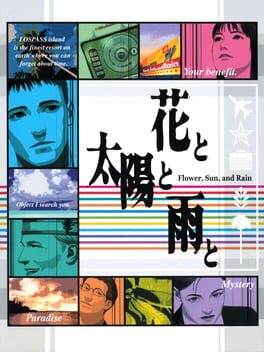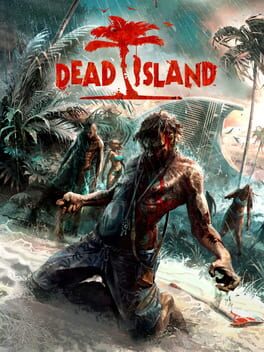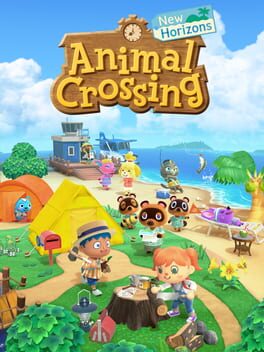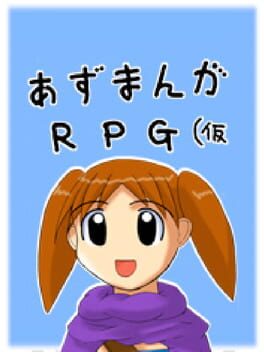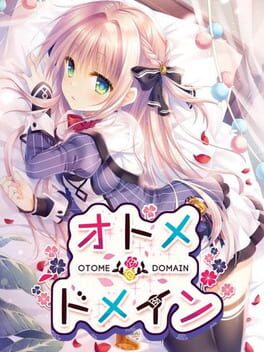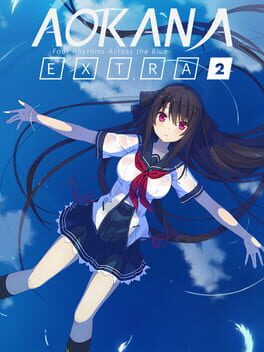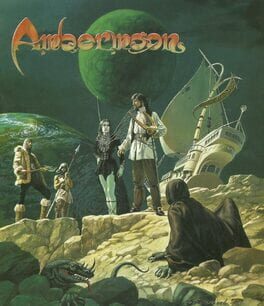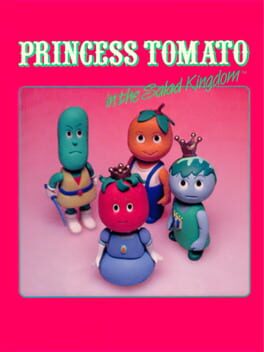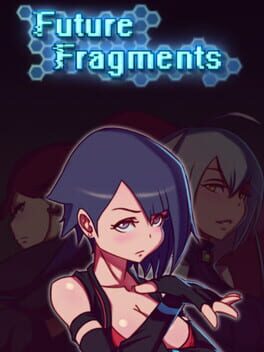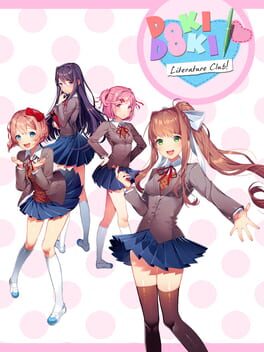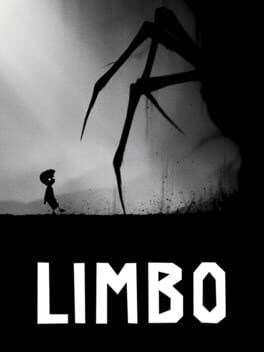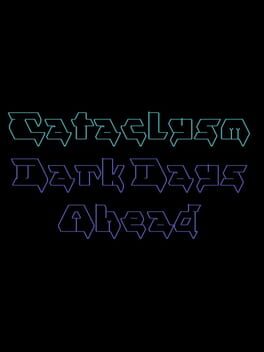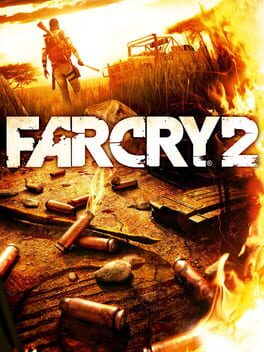PansyDragoonSaga
409 reviews liked by PansyDragoonSaga
Jusant
2023
Wow kind of loved this. One of those plinky ploinky IcoXJourney type games that actually manages to completely seal the deal with some genuinely astounding world design that compliments the character movement. This laser focus on the goal of verticality and the notches inbetween - tactile, weighty, arduous toil as you use your climbing gear to best the challenges the geometry imposes. Gushing with a sense of true scale, milestoned by countless opportunities to pan the camera back at the places you’ve come from and the mountaineering feats you’ve cleared. Dense and well-considered little pockets of civilisation in between crumbling pathways and inclines, full of the kind of coastal town fishery imagery I am a cow for. Beautiful and breathless game imo. Shame it undoes itself with all of these collectables and wordy diary entries that explain away the superlunary mystery of da world, although I’m fickle enough to kind of think I’d have given them a pass if the font choice was more diegetic lol.
Jusant is 1 for da perverts who blush at the Google Image Search: “Abandoned Crab Traps stacked rly high”.
Jusant is 1 for da perverts who blush at the Google Image Search: “Abandoned Crab Traps stacked rly high”.
I gave this game three tries across separate months in this year and could never get past the tutorial on each try. This is gonna be a long ass post because I wanna drop my thoughts on this game that no one cares about somewhere. This game is incredibly fascinating because "blatantly inaccessible" does not even begin to describe it. Every single aspect of this game is a filter on some level.
For the first filter, there is no real overarching story. The base concept is that that you play as a human from the real world possessing an android fighting for a military rebel organization in the 23rd century in underwater Mars. Your goal is to achieve universal peace in three years (there's a calendar system like in gunpa- I mean persona) or else every planet ever nukes each other and existence is over. Sounds like fifty SF story ideas put together but this isn't even the beginning of it. One would expect more of a story but there isn't one. The entire game is 80+ hours of talking to the 36 NPCs (some you have to unlock) on your battleship. The cast is equally as strange, it ranges from a dolphin in a cyborg suit to a giant octopus that's named "Ika" to a seven foot tall early 20th century Italian mafia named "Iron Sovereign". The strangest of them all however is this one kid who is just, a normal boy from our universe and that's his entire thing.
The second filter is that pretty much everything that's normal in other games is way overly detailed and has something stuck to it. What I mean by this is that, this game is tied to "realism" like no other. Aboard the battleship, whenever you want to use the elevator you have to actually wait for it and a lot of the times other NPCs are using it. I've never seen a game where you have to painstakingly wait at least a full minute or two for an elevator just like you would in real life. Some aspects are cool, for example you cannot offer the one Arab character alcohol because Muslims don't drink. Same thing with the underage members of the ship (you start being able to drink with them once they grow older). There's no fast travel or anything like that either, you have to walk across this gigantic submarine every time you want to go somewhere. Another thing is that, with Gunparade March I remember thinking that the AI in it felt incredibly realistic. Now I am glad that they did not feel TOO real because goddamnit this game goes way too hard. The AI in Kenran Butousai act just like real people, in that you can't even talk to them when you want. Aboard the battleship, pretty much everyone is busy with something and they all have their individual moods that you have to pay attention to. This doesn't sound all that special but consider this, if let's say an NPC is busy most of the time they will straight up not even respond to you. Not only that, there is a really detailed memory system where if you say you will go do maintenance for your mecha, the other NPCs remember that and go "Weren't you going to do maintenance? Stop being lazy and get to work." It gets really overwhelming especially with so many people on board, there's also like a dozen dialogue options for every single one of them and they always give some sort of new answer just like in Gunparade.
Oh yeah, the mecha. That's the third filter, besides the social aspects which are 95% of the game there's parts where you fight your enemies in your robot called the "Round Buckler". I can't even begin to describe the battle system, just skim through this clip here https://m.youtube.com/watch?v=NzKHCxP5V6M&t=535s .
Lastly, this game is a direct sequel to Gunparade March and there's a ton of returning characters. This being said, you won't even recognize any of them unless you know a lot about the overarching lore in the franchise and half of them aren't even actually the same people but alternate universe versions of them. In general, the game is so strange to me because it's like they saw everything people liked about Gunparade and decided to do the exact opposite. There's like a billion things I'm not going that into, such as the fact that the calendar system is actually tied to your real time too. Every time you save, dates pass by in the calendar. For example, if you save on August 7th and return to the game on August 14th three weeks pass in game. Not only that, but the game also counts your real hour play time too and that decides which ending you get. IIRC for the best ending you need to have over 50 hours in the game. All in all, I think this game is very cool and it's kind of lame that it's so unknown because I feel like some people would love it. But, I can't really score it and I never even got past the tutorial because I do not find it fun. If you love blatantly inaccessible games that are meant to be as overly complicated as possible this is your game. Either that, or this game is meant for people actually from the 24th century like in game. Oh and also, there's zero voice acting and this game has more menus you constantly have to read than probably any game ever AND there's a bunch of ship announcements that are in real time that you have to keep track of so... grinding a ton of Japanese is a must.
For the first filter, there is no real overarching story. The base concept is that that you play as a human from the real world possessing an android fighting for a military rebel organization in the 23rd century in underwater Mars. Your goal is to achieve universal peace in three years (there's a calendar system like in gunpa- I mean persona) or else every planet ever nukes each other and existence is over. Sounds like fifty SF story ideas put together but this isn't even the beginning of it. One would expect more of a story but there isn't one. The entire game is 80+ hours of talking to the 36 NPCs (some you have to unlock) on your battleship. The cast is equally as strange, it ranges from a dolphin in a cyborg suit to a giant octopus that's named "Ika" to a seven foot tall early 20th century Italian mafia named "Iron Sovereign". The strangest of them all however is this one kid who is just, a normal boy from our universe and that's his entire thing.
The second filter is that pretty much everything that's normal in other games is way overly detailed and has something stuck to it. What I mean by this is that, this game is tied to "realism" like no other. Aboard the battleship, whenever you want to use the elevator you have to actually wait for it and a lot of the times other NPCs are using it. I've never seen a game where you have to painstakingly wait at least a full minute or two for an elevator just like you would in real life. Some aspects are cool, for example you cannot offer the one Arab character alcohol because Muslims don't drink. Same thing with the underage members of the ship (you start being able to drink with them once they grow older). There's no fast travel or anything like that either, you have to walk across this gigantic submarine every time you want to go somewhere. Another thing is that, with Gunparade March I remember thinking that the AI in it felt incredibly realistic. Now I am glad that they did not feel TOO real because goddamnit this game goes way too hard. The AI in Kenran Butousai act just like real people, in that you can't even talk to them when you want. Aboard the battleship, pretty much everyone is busy with something and they all have their individual moods that you have to pay attention to. This doesn't sound all that special but consider this, if let's say an NPC is busy most of the time they will straight up not even respond to you. Not only that, there is a really detailed memory system where if you say you will go do maintenance for your mecha, the other NPCs remember that and go "Weren't you going to do maintenance? Stop being lazy and get to work." It gets really overwhelming especially with so many people on board, there's also like a dozen dialogue options for every single one of them and they always give some sort of new answer just like in Gunparade.
Oh yeah, the mecha. That's the third filter, besides the social aspects which are 95% of the game there's parts where you fight your enemies in your robot called the "Round Buckler". I can't even begin to describe the battle system, just skim through this clip here https://m.youtube.com/watch?v=NzKHCxP5V6M&t=535s .
Lastly, this game is a direct sequel to Gunparade March and there's a ton of returning characters. This being said, you won't even recognize any of them unless you know a lot about the overarching lore in the franchise and half of them aren't even actually the same people but alternate universe versions of them. In general, the game is so strange to me because it's like they saw everything people liked about Gunparade and decided to do the exact opposite. There's like a billion things I'm not going that into, such as the fact that the calendar system is actually tied to your real time too. Every time you save, dates pass by in the calendar. For example, if you save on August 7th and return to the game on August 14th three weeks pass in game. Not only that, but the game also counts your real hour play time too and that decides which ending you get. IIRC for the best ending you need to have over 50 hours in the game. All in all, I think this game is very cool and it's kind of lame that it's so unknown because I feel like some people would love it. But, I can't really score it and I never even got past the tutorial because I do not find it fun. If you love blatantly inaccessible games that are meant to be as overly complicated as possible this is your game. Either that, or this game is meant for people actually from the 24th century like in game. Oh and also, there's zero voice acting and this game has more menus you constantly have to read than probably any game ever AND there's a bunch of ship announcements that are in real time that you have to keep track of so... grinding a ton of Japanese is a must.
Cocoon
2023
If you go into this game believing it to be on the same level as Baba is You, The Witness, or even Return of the Obra Dinn in terms of puzzle complexity, you will be sorely disappointed. Cocoon has no interest in being those games; nearly all of its solutions are crystal clear once you think about them for a few moments. You can only interact with the world around you in few different ways, and the developers intentionally limit you from breaking away from their guided path. Despite the fact that--by the time you get two universe orbs--your options will blossom into myriad possible solutions, the reality is that there are almost always so few solutions that you can trial and error your way through every puzzle. Once you recognize that this is a game made by people who made Inside, and recognize it as more of a roped off experience with amusement park rides disguised as puzzles, you will find much more enjoyment here. In fact, I found myself being wowed several times in the short runtime. The conceit of the game is worth the price of admission alone, as it is used in such a way as to elicit wonder. This is less Zachtronics and more Gorogoa, making the dimension hopping a joy unto itself. Despite this, I couldn't help but feel like this concept could easily be used to craft a truly remarkable and challenging puzzle game. One moment near the end of the game sent my mind racing with possibilities, only to quickly be met by a final "puzzle" that was so milquetoast that I thought I got a bad ending. The game flirts with genius too much to acquiesce to its ultimate objective. It seems unfair to criticize it in this way, as it is clearly in the same lineage as the developers' previous games, but I think it speaks more to the latent potential in the concept.
Thirsty Suitors
2023
I walked into this expecting to really find it annoying, but it was more annoying in a gay way than a diaspora kid way so I felt able to be more lenient towards it. Still, I still find it lacking in having the conversations it needs to have. It’s moulded in the American liberal tradition of diaspora narratives, always ultimately optimistic about the ties that bind us and the motherlands, always finding the right angles where all our identities can be overlaid on top of each other perfectly. Even when this game is critical of the conservatism embedded in much of south asian social relations, it is reductively simplistic - the homophobic parents of one of the side characters are Brahmins who have brought all of their casteism to the new world that they have different plates for non-Brahmin guests! Jala’s, the protagonist’s, parents have historically progressed a generation ahead having eloped in a caste-exogamous marriage which informs how they raised their children. Their homophobia was dealt with in their generation too, with Jala’s aunt’s lesbianism leaving decades of room to have it addressed and sorted out. But this is a cowardly artifice rooted in contemporary anxieties of representation - our families are not violently homophobic satans clinging on to feudal hierarchies or futuristically progressive angels. Our anxieties are a lot more complex. My communist mother and liberal father (don’t say this is a good sitcom setup, I know, I’ve lived it for 22 years, Kerala has a great tradition of comedy of this vein) have always allowed me to do and be whatever and whoever I want, but they are still a pair of 52 year old Indian Gen X-ers. I don’t talk to them about queer issues. I don’t know where to start. I don’t know if their allowance of “what and who I want” extents to being a woman. I wish the game was interested in navigating this complexity instead of black and white depictions of south asian conservatism and progressivism. It reads very much like a “we don’t want to scare off a white liberal audience with a more nuanced engagement with the baggage of history”, and every time the game dips into “haha Asian parents am I right” humour I wanted to destroy the state of california.
On the flipside, and maybe this is what they were going for, Jala is a perfect fantasy. She is absolutely what people like me wish to be. Aside from the whole being a life-ruining mess for everyone part. She’s empowered, confident, supported by everyone, effortlessly cool. It is absolutely good that we have a game with a protagonist like her, as much as I can be critical of what that game is.
There’s a part of this game where Jala is criticised for choosing “the pleasures of the imperial core” over family and tradition. While the character suggesting this serves an antagonistic function, they are still suggested to be making a correct assessment. But Jala is a Tamil Brahmin whose family lives in Bangalore. The imperial core is where she is minoritised and racialised. The “pleasure of the imperial core” she has access to is queer struggle, not burgers and milkshakes. It’s a much easier struggle than what she’d face in the motherland, but it’s not easy, especially with this game’s weird anachronistic 90s setting. It just appeared so strange to me that such an idea would pop up in this game at all, and so evidently shows the game’s frustrating crisis in managing an original, personal story and the monomyth of asian diasporic narratives.
On the flipside, and maybe this is what they were going for, Jala is a perfect fantasy. She is absolutely what people like me wish to be. Aside from the whole being a life-ruining mess for everyone part. She’s empowered, confident, supported by everyone, effortlessly cool. It is absolutely good that we have a game with a protagonist like her, as much as I can be critical of what that game is.
There’s a part of this game where Jala is criticised for choosing “the pleasures of the imperial core” over family and tradition. While the character suggesting this serves an antagonistic function, they are still suggested to be making a correct assessment. But Jala is a Tamil Brahmin whose family lives in Bangalore. The imperial core is where she is minoritised and racialised. The “pleasure of the imperial core” she has access to is queer struggle, not burgers and milkshakes. It’s a much easier struggle than what she’d face in the motherland, but it’s not easy, especially with this game’s weird anachronistic 90s setting. It just appeared so strange to me that such an idea would pop up in this game at all, and so evidently shows the game’s frustrating crisis in managing an original, personal story and the monomyth of asian diasporic narratives.
Crymachina
2023
The machine did indeed, cry.
Crymachina is a spiritual successor to Crystar, carrying over plenty of the old game's systems, ideas, and staff which would make old fans feel at home right away but also give them an entirely different experience that often times feel like the complete opposite of Crystar. While this can possibly be a bit of a turn off for returning fans depending on how much they expect this game to be like the other, I believe that anyone going into the game with an open mind would find this different experience to be a very enjoyable, lovely, and emotional experience.
Mechanically, the game is a gigantic leap from the first game in pretty much every aspect. The character models are very high quality and animated very well, accurately depicting their really unique and expressive designs by Rolua. The graphics themselves are also very good and shown off a lot in the really flashy, unique, and very enjoyable combat system which can get quite challenging too. The game also has a different gameplay loop from Crystar, now offering very short linear stages that always ends in a boss fight with all playable characters having their own differing playstyles and offering a nice degree of customization in the form of assistive gear that you call up during combat to cover different situations like hitting from afar, granting impenetrable defense, starting launch combos, etc. Although, the map designs definitely don't feel as expressive as they used to be, which is fairly understandable given the entirely opposite setting with a "grounded" spaceship interior as opposed to Crystar's colorful depiction of purgatory.
The aspects that really took me by surprise though would definitely be the characters and story with how they really went in a different direction from everything I expected. Despite the game still having plenty of really dramatic moments and intriguing mysteries, the game in general has a much lighter tone for a majority of the time compared to Hayashi's previous works. I often found myself with a grin or giggling every time we're shown the characters interactions, whether its among the main 4 or with the rest of the interesting side cast. I also did not expect, but very much appreciate, how hard they went into the sci-fi aspect of the story and setting with a very refreshing far-future world done so well that it really pulls you into the entire thing. The story's various twists and surprises were all handled really well too and kept me hooked the entire time with how well they've put their own crazy spin to the classic concept of machines gaining sentience and emotion and how far those would take these machines whose sole purpose and reason for creation were to simply obey commands they were given.
Admittedly though, the game sadly doesn't hit the emotional highs that I've gotten from Crystar which I feel is a bit of a shame but I'm perfectly fine with considering everything else the game handles really well. It was everything I didn't expect it to be but still really left the best impression on me given what the game was openly going for, and for that it deserves all the praise I can give it and really makes me more excited for the future projects Hayashi will hopefully have which I will definitely be there for.
GOTY.
Crymachina is a spiritual successor to Crystar, carrying over plenty of the old game's systems, ideas, and staff which would make old fans feel at home right away but also give them an entirely different experience that often times feel like the complete opposite of Crystar. While this can possibly be a bit of a turn off for returning fans depending on how much they expect this game to be like the other, I believe that anyone going into the game with an open mind would find this different experience to be a very enjoyable, lovely, and emotional experience.
Mechanically, the game is a gigantic leap from the first game in pretty much every aspect. The character models are very high quality and animated very well, accurately depicting their really unique and expressive designs by Rolua. The graphics themselves are also very good and shown off a lot in the really flashy, unique, and very enjoyable combat system which can get quite challenging too. The game also has a different gameplay loop from Crystar, now offering very short linear stages that always ends in a boss fight with all playable characters having their own differing playstyles and offering a nice degree of customization in the form of assistive gear that you call up during combat to cover different situations like hitting from afar, granting impenetrable defense, starting launch combos, etc. Although, the map designs definitely don't feel as expressive as they used to be, which is fairly understandable given the entirely opposite setting with a "grounded" spaceship interior as opposed to Crystar's colorful depiction of purgatory.
The aspects that really took me by surprise though would definitely be the characters and story with how they really went in a different direction from everything I expected. Despite the game still having plenty of really dramatic moments and intriguing mysteries, the game in general has a much lighter tone for a majority of the time compared to Hayashi's previous works. I often found myself with a grin or giggling every time we're shown the characters interactions, whether its among the main 4 or with the rest of the interesting side cast. I also did not expect, but very much appreciate, how hard they went into the sci-fi aspect of the story and setting with a very refreshing far-future world done so well that it really pulls you into the entire thing. The story's various twists and surprises were all handled really well too and kept me hooked the entire time with how well they've put their own crazy spin to the classic concept of machines gaining sentience and emotion and how far those would take these machines whose sole purpose and reason for creation were to simply obey commands they were given.
Admittedly though, the game sadly doesn't hit the emotional highs that I've gotten from Crystar which I feel is a bit of a shame but I'm perfectly fine with considering everything else the game handles really well. It was everything I didn't expect it to be but still really left the best impression on me given what the game was openly going for, and for that it deserves all the praise I can give it and really makes me more excited for the future projects Hayashi will hopefully have which I will definitely be there for.
GOTY.
Crymachina
2023
「やさしさで守れるあしたなんかどこにもない」
Anti-humanist yuri SF. All too often stories about sentient robots really only serve to stroke the ego of the humans creating and consuming them -- see the utterly abysmal anime Vivy for a great example of this -- but Crymachina is unwaveringly transgressive, reaching the conclusion that there is no inherent value in "humanity" and going on to posit that human society does not deserve to proliferate if that means trampling on intelligent beings it views as inferior.
As with Crystar, Crymachina's characters are concerned primarily with their own happiness, acting for the sake of the people they hold dear. And yes, the game is unabashedly queer, with characters driven not just by familial bonds but romantic love; indeed I am hard-pressed to think of another JRPG where love is such a strong motivating factor for the principal cast. Leben and Enoa struggle against the system not out of a sense of obligation or duty, but because of their desire for a life with one another, because their future together is being threatened. While the world of Crymachina is built on high-concept SF, taking enough cues from the novel The Three-Body Problem to warrant citing it in the end credits, its conflict remains raw, poignant, and grounded to a degree a great deal of media struggles to achieve.
Where I think the game will prove divisive is actually its runtime. Crymachina clocks in at only 15-20 hours of playtime, so it has to cover a lot of twists and turns fast. I can completely understand someone feeling as though the plot and characters don't have time to breathe, but I personally would argue that the script is tight enough that anything added to it could be nothing more than chaff. On Twitter I stated that it has "Blue Archive pacing," and I meant that in a complimentary sense. Certainly a YMMV aspect of the game, but it personally worked for me.
What I think most players will appreciate, though, is how abbreviated, even cursory, the actual gameplay is when compared to Crystar. You may have to grind a few times, but the stages are short and you are not forced to repeat content ad nauseam; I would estimate I spent only around 5 hours of my 16 hour playtime actually controlling characters. As such, while the game is much shorter than Crystar, I would not be surprised if it actually had more text...
And of course I would be remiss not to mention another one of the game's strong suits -- the audio. Personally I think Crymachina's soundtrack is sakuzyo's best work period, with much more varied compositions than Crystar. It helps that the music is used much better here than Crystar, with fewer and less repetitious music cues letting you appreciate the individual tracks more. As one might expect, the voice acting is also sublime, with Tohno Hikaru's performance as Enoa in particular lending the scenario some real emotional weight.
All in all Crymachina is a very different game from Crystar, but it pleasantly surprised me with its powerful script, acerbic critique of the ugly aspects of human society, and willingness to be fully-fledged romantic yuri in a space where few works meaningfully depict love at all. This is definitely my favorite Furyu game... make of that statement what you will, I suppose.
Anti-humanist yuri SF. All too often stories about sentient robots really only serve to stroke the ego of the humans creating and consuming them -- see the utterly abysmal anime Vivy for a great example of this -- but Crymachina is unwaveringly transgressive, reaching the conclusion that there is no inherent value in "humanity" and going on to posit that human society does not deserve to proliferate if that means trampling on intelligent beings it views as inferior.
As with Crystar, Crymachina's characters are concerned primarily with their own happiness, acting for the sake of the people they hold dear. And yes, the game is unabashedly queer, with characters driven not just by familial bonds but romantic love; indeed I am hard-pressed to think of another JRPG where love is such a strong motivating factor for the principal cast. Leben and Enoa struggle against the system not out of a sense of obligation or duty, but because of their desire for a life with one another, because their future together is being threatened. While the world of Crymachina is built on high-concept SF, taking enough cues from the novel The Three-Body Problem to warrant citing it in the end credits, its conflict remains raw, poignant, and grounded to a degree a great deal of media struggles to achieve.
Where I think the game will prove divisive is actually its runtime. Crymachina clocks in at only 15-20 hours of playtime, so it has to cover a lot of twists and turns fast. I can completely understand someone feeling as though the plot and characters don't have time to breathe, but I personally would argue that the script is tight enough that anything added to it could be nothing more than chaff. On Twitter I stated that it has "Blue Archive pacing," and I meant that in a complimentary sense. Certainly a YMMV aspect of the game, but it personally worked for me.
What I think most players will appreciate, though, is how abbreviated, even cursory, the actual gameplay is when compared to Crystar. You may have to grind a few times, but the stages are short and you are not forced to repeat content ad nauseam; I would estimate I spent only around 5 hours of my 16 hour playtime actually controlling characters. As such, while the game is much shorter than Crystar, I would not be surprised if it actually had more text...
And of course I would be remiss not to mention another one of the game's strong suits -- the audio. Personally I think Crymachina's soundtrack is sakuzyo's best work period, with much more varied compositions than Crystar. It helps that the music is used much better here than Crystar, with fewer and less repetitious music cues letting you appreciate the individual tracks more. As one might expect, the voice acting is also sublime, with Tohno Hikaru's performance as Enoa in particular lending the scenario some real emotional weight.
All in all Crymachina is a very different game from Crystar, but it pleasantly surprised me with its powerful script, acerbic critique of the ugly aspects of human society, and willingness to be fully-fledged romantic yuri in a space where few works meaningfully depict love at all. This is definitely my favorite Furyu game... make of that statement what you will, I suppose.
Final Fantasy XVI
2023
Let's Catch
2008
Beneath a fading silver sky, I found myself locked in a timeless dance of catch with a stranger.
Good +30
Our hands connected across the expansive field through the shared rhythm of a baseball's flight, while our hearts bridged the chasm of anonymity with every gentle toss.
Good +30
Amidst the soft thud of the catch, we listened heartfully to stories that spilled like fragments of a soul's journey.
Normal +20
Each throw, a moment shared, a piece of the intricate mosaic of their life.
Perfect! +50
Good +30
Our hands connected across the expansive field through the shared rhythm of a baseball's flight, while our hearts bridged the chasm of anonymity with every gentle toss.
Good +30
Amidst the soft thud of the catch, we listened heartfully to stories that spilled like fragments of a soul's journey.
Normal +20
Each throw, a moment shared, a piece of the intricate mosaic of their life.
Perfect! +50
Vampire Survivors
2021
All of the let's play narration for these random-build-focused slot-machine-action-games is like 'ohh after your 50th run you'll have enough gopher coins to now unlock the Zuckerberg's Icon so now when you play Billy Boy and choose the Steven Stone for your 14th Arcana Tier you'll be able to Yummymax your way past the 4th Tier of Encroachening when you face the waves of 23 Yeti-men. Make sure to spend you 1.0% APR Slammy Shards only on Subtle-enchanted Attack Boosts to make sure the chance of reaching Heaven is fulfilled on a blue day! Like comment and subscribe
Was just reminded of this by chance...
I think this is one of the only dungeon crawlers I've ever finished. I played the Japanese release originally. Overall I think I found this to just be a really unique experience that wasn't weighed down by the things that usually ruin DRPGs for me
- equipment requiring readjustment far too often
- stat systems being burdensome - splitting your access to power across 5 or 6 interrelated and boring systems
- levels that are to overexcitedly big or repetitive
Instead from what I remember this game had some strange ability and progression systems. I liked how unique this game felt - not afraid to try some new ideas out, that's what I really value with games - the way each level felt surprising in its structure, and actually used its structure to convey something about the space, rather than just be a boxy and corridor-ridden mess.
The systems too were fun - dying in various ways, using that to get stronger, the ages... I don't remember them ever getting too overwhelming. It might have been interesting how the character ages can play into your strategy as they die/revive/etc.
I think this is one of the only dungeon crawlers I've ever finished. I played the Japanese release originally. Overall I think I found this to just be a really unique experience that wasn't weighed down by the things that usually ruin DRPGs for me
- equipment requiring readjustment far too often
- stat systems being burdensome - splitting your access to power across 5 or 6 interrelated and boring systems
- levels that are to overexcitedly big or repetitive
Instead from what I remember this game had some strange ability and progression systems. I liked how unique this game felt - not afraid to try some new ideas out, that's what I really value with games - the way each level felt surprising in its structure, and actually used its structure to convey something about the space, rather than just be a boxy and corridor-ridden mess.
The systems too were fun - dying in various ways, using that to get stronger, the ages... I don't remember them ever getting too overwhelming. It might have been interesting how the character ages can play into your strategy as they die/revive/etc.
65 lists liked by PansyDragoonSaga
by LoreW001 |
686 Games
by ZapRowsdower |
39 Games
by letshugbro |
11 Games
by Cold_Comfort |
9 Games
by Eodqnlqwhuydo |
100 Games
by Eodqnlqwhuydo |
88 Games
by dirty_score |
119 Games
by letshugbro |
108 Games
by vehemently |
25 Games
